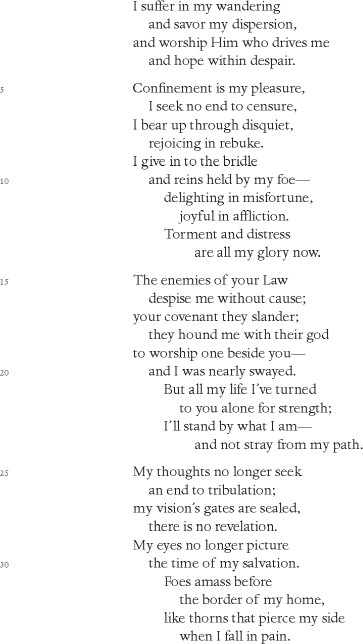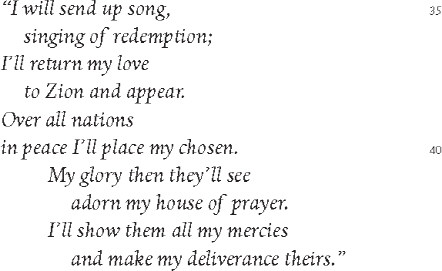YITZHAQ IBN GHIYYAT
(1038–89)
Protected from the hot southern winds by a range of mountains and therefore cooler than much of southern Andalusia in summer, the town of Lucena—known both as “the city of the Jews” and “the city of song”—was famous for its fertile lands and thriving commerce, which included trade in slaves. It was also home to Spain’s most important Hebrew academy, for many years headed by YITZHAQ IBN GHIYYAT. In temperament Ibn Ghiyyat was distant from the Arabized and progressive court of HaNagid, whose student he had been, and he was very much the moderate man devoted to the world of the synagogue and his religious community. He was highly regarded as a teacher and scholar, and was a key figure in the transmission of Hebrew learning in al-Andalus. Among his students were several important Hebrew poets, including Yosef Ibn Sahl, Yosef Ibn Tzaddiq, and Moshe Ibn Ezra. (Only the Talmud, religious law, and—to a certain extent—the Bible were taught at the academies, however; nonreligious subjects, including poetry, were pursued privately.) In his Book of Tradition, Avraham Ibn Daud says that Ibn Ghiyyat was well versed in “Greek wisdom” (the sciences), learning that found expression in some of his liturgical work—albeit with little of the grace and flair we encounter in Ibn Gabirol’s Kingdom’s Crown. Ibn Ezra notes that while Ibn Ghiyyat was, in his writing, more inclined than his predecessors to devotion, asceticism, lamentation, and mourning, he was less gifted than they were at metrical composition, perhaps because he was “weak in Arab wisdom,” meaning literature. Still, says Ibn Ezra, his style was simple and clear.
Only a handful of Ibn Ghiyyat’s secular poems have survived, but the body of his liturgical work is large, and many of his hymns were preserved in the prayer books of various communities and in the Cairo Geniza. On the whole, the hymns build on Ibn Gabirol’s innovations; what was radical in one generation became standard practice in the next, particularly when it was taken up by respected figures such as Ibn Ghiyyat. Though much of Ibn Ghiyyat’s liturgical work is conventional, the best of his piyyutim, particularly those that deal with Israel’s relation to the nations of the world, capture—Schirmann suggests—the air of mystery and desire that often accompanies the congregation’s middle-of-the-night recitations of penitential poems in the month leading up to the Days of Awe.

MY WANDERING

